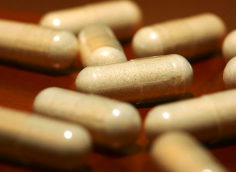Research on lean, healthy subjects shows an increase in BMR (basal metabolic rate) for about the first two weeks with overfeeding. That means when you try to eat big, your body's first response is to increase its metabolic rate.
For regular folks who want to build muscle but not get fat, this is good news, and a good calorie cycling plan can be devised based on this info. For example, overfeed for two weeks, then back down to maintenance levels for a while, then repeat.
But this is precisely why just eating more doesn't always work for hardgainers. They take the advice, start eating more for a couple weeks, and then find the scale won't budge. Now the hardgainer thinks he's a non-gainer. He gives up on nutrition and thinks some magical new biceps curl variation is the real secret to getting jacked.
Look, this spike in your already naturally fast metabolism is part of the game. Don't worry, it won't keep increasing forever, but you need to be patient. You need time for your body to get used to consuming larger volumes of food. In fact, you may not even be able to eat and properly digest the amount of quality food you need to build muscle... yet.
Stay the course, let your body adapt for about two weeks, and the scale will start moving up after that. If you're not in this for the long haul, you need a different hobby.
Reference
- Harris, A. M., Jensen, M. D., & Levine, J. A. (2006). Weekly Changes in Basal Metabolic Rate with Eight Weeks of Overfeeding. Obesity, 14(4), 690-695. doi:10.1038/oby.2006.78.





